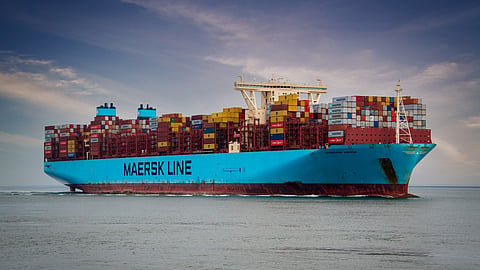On February 24, 2022, Russian President Vladimir Putin announced a ‘special military action’ in eastern Ukraine. This was considered as an act of war and took everyone by surprise. The Indian markets crashed by 4.7 per cent that day. At the inter-bank foreign exchange market, the rupee opened at 75.02 against the US dollar but later dropped to a low of 75.75. This was mainly due to outflow of funds from emerging markets owing to geopolitical uncertainties. The foreign reserves have fallen over 2-3 per cent from its peak.
How The Russia-Ukraine War Could Impact India's Export Import Sectors
The ongoing war has caused the Indian rupee to depreciate further against the US dollar. Exporters will benefit but the import bill will increase.
“Currently, the total forex reserves in India are somewhere in the region of $630-635 billion. It touched a lifetime high of USD 642.45 billion in the week ended on September 3, 2021. Usually, the cover provided by forex reserves is at 10 months of total imports using the last available data,” said Sriram Venkataraman Iyer, Senior Research Analyst-Commodities and Currencies at Reliance Securities.
Depreciating Rupee Boon For Export Companies
As of December 2021, India’s exports to Russia stood at Rs 27.114 billion, as per data from the Reserve Bank of India (RBI). This was the highest export trade amount in 30 years (2022-1992). As the news of war hit the public domain, the Indian rupee continued to depreciate further due to panic selling by investors. “Depreciation of the rupee caused by the ongoing conflict between Russia and Ukraine would mean partial relief for Indian exporters who have negotiated contracts in dollars,” said Sanjay Bhatia, CEO and Co-founder, Freightwalla, a freight forwarding company.

A depreciated rupee helps exporters in the short term as they earn more money (rupees) for the goods exported. But this holds true for those exporters too who do not import any raw material for production. For instance, car manufacturing companies such as Maruti and Mahindra import some electronics parts from other countries (like computer chips from Taiwan), manufacture the car in India and then export it to other countries. But software-exporting companies (TCS, Infosys, etc.) do not need to import anything for rendering services. So, while some exporters may gain from the rupee depreciating, others stand to lose.
“Businesses prefer a stable currency exchange rate. Exchange rate fluctuations weigh one against the other and the domestic market may not have the appetite to ingest such changes. While in the short term, a depreciated rupee might bring benefits to exporters, a stable currency exchange rate is a far more preferable option to ensure business stability,” says Tarun Soni, Chief Financial Officer, Bizongo, a supply chain enablement platform.
Although India has enough forex reserves to tide over any severe volatility in currency exchange trading, due to the ongoing tensions relating to the Russia-Ukraine war, all emerging market currencies have depreciated against the US dollar. Big exporters have a dedicated treasury department that buys or sells US dollars at regular intervals to hedge their operations. Now, due to currency volatility, their hedges might not work and as a result, their export operations could be impacted.
“The current exchange rate is not stable, since the fluctuations are in response to a geopolitical crisis. The situation is changing rapidly and so volatility will be a persistent feature. The risks such fluctuations bring are unforeseeable for any business. Companies will need to isolate some capital to hedge the risks of such fluctuations. A stable exchange rate allows a company to plan better, and estimate more accurately the demand and supply of goods and services. Most businesses would prefer stability in markets over short-term gains made from exchange rate fluctuations,” says Soni.

Bane For Import Sectors In India
Indian importers will now have to pay more money for the same amount of goods and services. Petroleum products, precious metals, and other goods form a bulk of items that India imports. Brent crude spot price has breached $100 a barrel ($102.59 on February 28). And with the Indian rupee depreciating, India will have to pay more for these. “Importers will have to shell out more Rupees for each Dollar, which will have a slightly negative impact. In light of the current inflationary environment, businesses would face added pressure on their margins. Whether they choose to pass this along to the consumer remains to be seen. Thus, currency depreciation also has an impact on inflation,” said Soni.

Hit On Margins; Higher Capital Expenditure
According to data from the Oil Ministry, the oil import bill for the April-December 2022 period surged by 99 per cent to $94.3 billion, as per various media sources. Now, this oil import bill is to be paid in US Dollars but since the rupee has depreciated so much against the US Dollar, paying the same bill will mean more money in rupee terms. “Importers are likely to find their landed cost to become dearer, which will have ripple effects throughout India's consumption economy,” said Bhatia.
Several manufacturing companies import machinery and tools. For example, all mobile phone manufacturers have to import computer chips and then assemble/manufacture the phone in India. Without these microchips, no phone can be manufactured in India as of now. Due to the depreciated rupee, capital goods importers will have to pay more in rupee terms for the same quantity of goods.